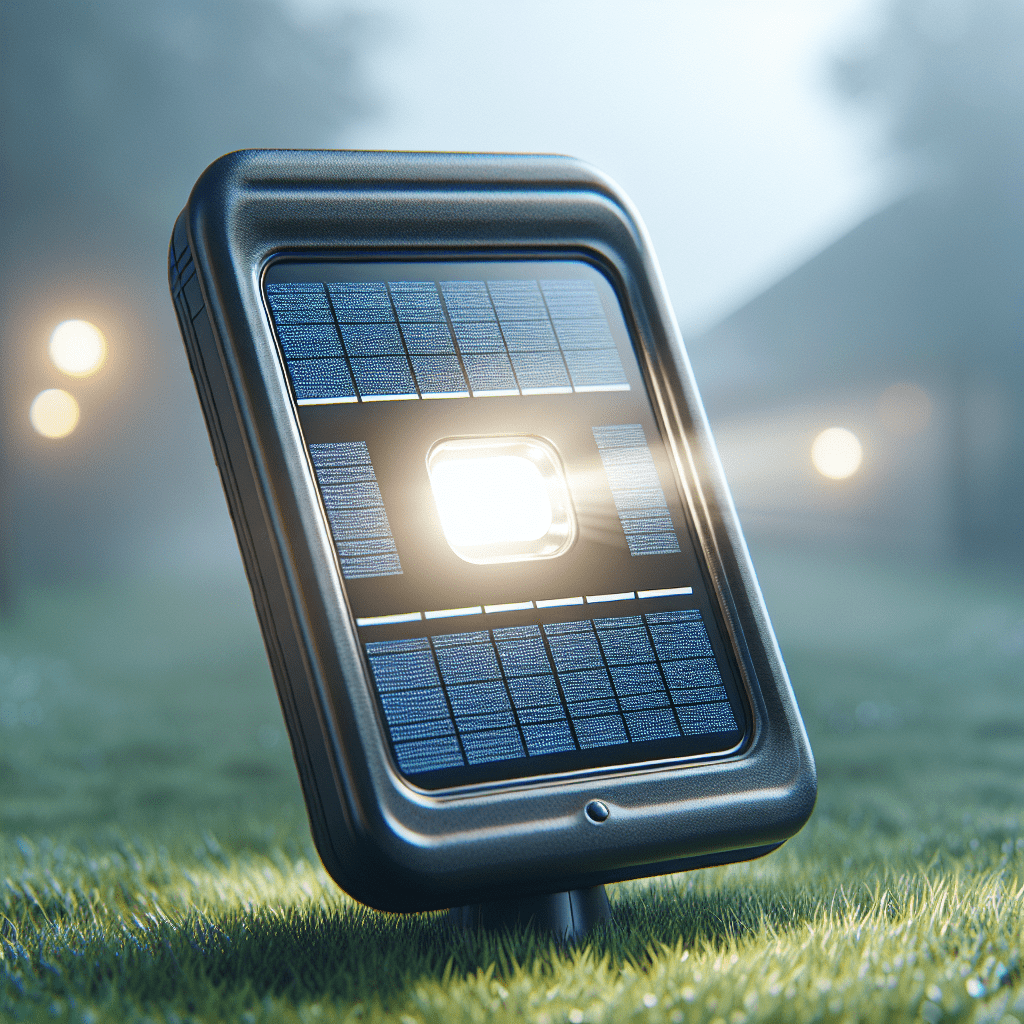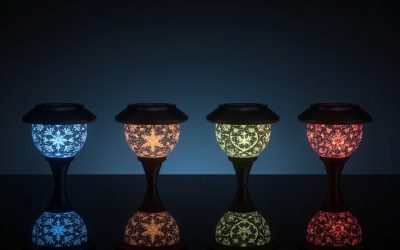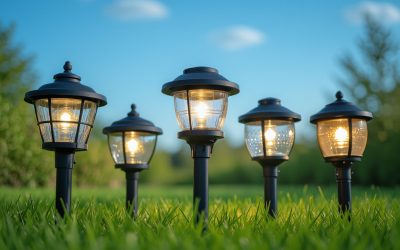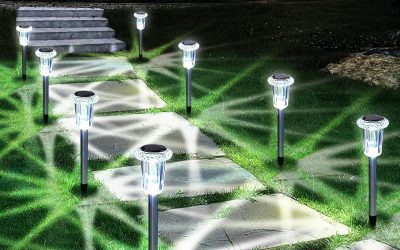Imagine stepping out into your beautifully landscaped garden at night and being greeted by a warm and inviting glow. Solar lights have become a popular choice for outdoor lighting, harnessing the power of the sun to illuminate your outdoor spaces. But what is the ideal lumen level for these solar lights to achieve the perfect balance between functionality and ambiance? In this article, we will explore the importance of lumens in solar lights and guide you towards finding the ideal lumen level for your outdoor lighting needs.
Factors to Consider
Location
When choosing solar lights, one of the key factors to consider is the location where the lights will be installed. Different locations have different lighting requirements, and understanding the specific needs of your chosen location will help determine the appropriate lumen level for your solar lights. Consider factors such as the amount of natural light available in the area, the potential for obstructions that may create shadows, and the overall aesthetic appeal you want to achieve.
Purpose
Another important factor to consider is the purpose of the solar lights. Are you looking to install pathway lighting to guide guests safely to your front door? Or perhaps you want to illuminate your garden to create a warm and inviting atmosphere. The purpose of the lights will have a direct impact on the lumen level needed. Understanding the intended use of the solar lights will help you select the right lumen level to meet your specific needs.
Coverage
The area you want to illuminate plays a significant role in determining the appropriate lumen level for your solar lights. The larger the area, the more lumens you will need to effectively light it up. Consider the size of the space you want to illuminate and choose solar lights with an appropriate lumen output to ensure uniform coverage and adequate visibility.
Battery Capacity
The battery capacity of your solar lights is an essential factor to consider to ensure optimal performance. The lumen level you choose should be balanced with the battery capacity, as a higher lumen output will require more energy. By selecting solar lights with sufficient battery capacity, you can ensure that they continue to provide adequate lighting throughout the night, even on cloudy days.
Lumen Levels for Different Applications
Pathway Lighting
Pathway lighting is typically used to guide people along walkways and driveways, providing both safety and aesthetics. For this application, a lower lumen level is usually sufficient, as the primary goal is to create a gentle glow rather than intense illumination. A lumen range of 50-100 lumens is often suitable for pathway lighting, ensuring visibility without causing discomfort or glare.
Garden Lighting
Garden lighting is about creating ambiance and highlighting specific features in your outdoor space. Depending on the size and layout of your garden, the lumen level needed may vary. In general, a range of 100-300 lumens is recommended for garden lighting. This allows for a pleasant illumination that showcases your plants and landscape without overwhelming the overall environment.
Security Lighting
Security lighting is crucial for providing visibility and deterring potential intruders. When it comes to security lighting, a higher lumen level is usually necessary to ensure adequate brightness and coverage. It is recommended to choose solar lights with a lumen output of at least 500 lumens for effective security lighting. This level of brightness helps to ensure clear visibility and maximize the deterrent effect of the lights.
Accent Lighting
Accent lighting is used to highlight specific architectural elements or focal points in your outdoor space. It adds a touch of drama and visual interest. Depending on the size and significance of the accent you want to highlight, the lumen level required may vary. In general, a range of 50-200 lumens is suitable for accent lighting. This allows for a focused beam of light that draws attention to the desired feature without overpowering the surrounding area.
Recommended Lumen Levels for Common Uses
Low-level Uses
For low-level uses such as decorative lighting or gentle illumination in small areas, a lumen range of 50-100 lumens is usually sufficient. These applications are focused on creating ambiance rather than providing intense lighting. Consider using solar lights with lower lumen outputs to achieve a soft, warm glow in these areas.
Medium-level Uses
Medium-level uses encompass a wide range of applications, including pathway lighting, garden illumination, and accent lighting. For these purposes, a lumen range of 100-300 lumens is recommended. This provides adequate visibility without being overwhelming, allowing you to strike a balance between functionality and aesthetics.
High-level Uses
High-level uses, such as security lighting, require brighter and more powerful solar lights. To effectively illuminate these areas and provide a strong deterrent to intruders, solar lights with lumen outputs of at least 500 lumens are recommended. This ensures a high level of visibility and maximizes the effectiveness of the lights for security purposes.
Balancing Brightness and Energy Efficiency
Importance of Proper Brightness
Selecting the right lumen level for your solar lights is crucial to ensure proper brightness. Insufficient brightness may result in poor visibility and compromise the intended function of the lights, while excessive brightness can cause discomfort and unnecessary energy consumption. Striking the right balance will not only enhance the effectiveness of your solar lights but also contribute to energy efficiency.
Choosing the Right Lumen Level
When choosing the lumen level for your solar lights, consider factors such as the specific application, desired visibility, and the area size you want to illuminate. By understanding the purpose and requirements of your lighting project, you can select solar lights with an appropriate lumen output. Choosing the right lumen level will help optimize brightness and ensure that your solar lights perform effectively in their designated roles.
Energy Efficiency Considerations
Energy efficiency is a crucial factor to consider when selecting solar lights. Higher lumen levels generally require more energy to operate, resulting in reduced battery life and potentially increasing the need for frequent recharging. By choosing solar lights with an appropriate lumen level, you can strike a balance between brightness and energy efficiency. This will help maximize the performance of your lights and extend their runtime.
Effects of Overestimating or Underestimating Lumens
Overestimating Lumens
Overestimating the lumen level needed for your solar lights can have several negative effects. First, it may lead to excessive energy consumption, as higher lumen outputs require more power. This can result in reduced battery life and a shorter overall runtime of your solar lights. Additionally, overestimating lumens can lead to unnecessary glare and discomfort for those in the vicinity of the lights, affecting their overall experience and potentially causing visual discomfort.
Underestimating Lumens
On the other hand, underestimating the required lumen level may result in insufficient brightness. Inadequate lighting can compromise the intended functionality of your solar lights, making them less effective in their designated roles. Areas that are not properly illuminated may pose safety hazards, and the overall aesthetic appeal may be diminished. It is important to ensure that the chosen lumen level is suitable for the specific purpose and area size to avoid underestimation.
How to Determine Lumen Requirements
Area Size
The size of the area you want to illuminate is an essential factor to consider when determining the lumen requirements. Larger spaces generally require higher lumen outputs to ensure adequate coverage and visibility. Measure the dimensions of the area and consider any potential shadows or obstructions that may affect lighting distribution. By understanding the size of the space, you can choose solar lights with an appropriate lumen level to meet your requirements.
Required Lux/Lux Level
Lux is a unit of measurement that represents the amount of light falling on a surface. The required lux level for your lighting project depends on the specific application and the desired amount of brightness. It is recommended to consult lighting professionals or refer to industry standards to determine the appropriate lux level for your specific needs. Once you know the required lux level, you can select solar lights with the corresponding lumen output to achieve the desired brightness.
Mounting Height
The height at which you mount your solar lights can affect the lumen requirements. Generally, lights mounted at higher heights may require higher lumen outputs to ensure that an adequate amount of light reaches the ground. Consider the mounting height of your solar lights and choose lumen levels that can appropriately compensate for any potential light loss due to increased distance. By taking into account the mounting height, you can ensure effective illumination across the desired area.
Solar Lights and Lumens: Common Myths
Higher Lumens Always Better
It is a common misconception that higher lumens always mean better lighting. While it is true that higher lumen levels provide brighter illumination, excessively high lumens can lead to discomfort, unnecessary energy consumption, and potentially compromised visibility. Choosing the right lumen level that meets the specific requirements of your lighting project is more important than simply opting for the highest lumen output available.
Lumens vs Watts
Another common misconception is the confusion between lumens and watts. Lumens measure the brightness or light output of a bulb, while watts measure the power consumption. Energy-efficient LED bulbs produce more lumens per watt compared to traditional incandescent bulbs. When selecting solar lights, it is important to focus on the lumen output rather than the wattage to ensure optimal brightness and energy efficiency.
All-in-One vs Separated Solar Lights
The type of solar lights you choose, whether all-in-one or separated, may affect the lumen output and overall performance. All-in-one solar lights have the solar panel, battery, and light fixture integrated into one unit, while separated solar lights have separate components. It is important to note that all-in-one solar lights may have limitations in terms of lumen output due to space constraints compared to separated solar lights. Consider the lumen requirements of your lighting project and choose the appropriate solar light type accordingly.
Tips for Optimizing Light Output
Proper Orientation and Tilt
To optimize the light output of your solar lights, it is important to ensure proper orientation and tilt. Solar panels should be angled and positioned to receive maximum sunlight throughout the day. This will ensure efficient charging of the batteries and provide optimal power for the light output during the night. Regularly check the alignment and adjust the orientation and tilt as needed to maximize the light output.
Regular Cleaning and Maintenance
Regular cleaning and maintenance are essential for maintaining optimal light output. Dust, dirt, and other debris can accumulate on the solar panels and light fixtures, reducing their efficiency and affecting the overall brightness. Clean the solar panels and light fixtures regularly to ensure maximum light absorption and output. Additionally, check for any damage or wear and tear that may require repairs or replacements to maintain the desired light output.
Choosing High-quality Solar Lights
When it comes to solar lights, quality matters. Choosing high-quality solar lights ensures optimal performance and longevity. High-quality solar lights are designed with efficient solar panels, durable batteries, and reliable light fixtures. These components work together to provide consistent light output and withstand various weather conditions. By investing in high-quality solar lights, you can optimize the light output and enjoy reliable illumination for years to come.
Environmental Considerations
Light Pollution
As we embrace solar lights for their energy efficiency, it is important to be mindful of light pollution. Light pollution refers to the excessive or misdirected artificial light that affects the natural darkness of the night sky. To minimize light pollution, choose solar lights with proper shielding and directed light patterns. By controlling the direction and spread of light, you can reduce the impact on the night sky and promote a more environmentally friendly lighting solution.
Impact on Wildlife
Solar lights, when used properly, can have a minimal impact on wildlife. However, it is essential to consider the potential effects on nocturnal creatures, including insects and birds. Excessive and intrusive lighting can disrupt their natural behavior patterns, navigation, and feeding habits. Consider using solar lights with lower lumen outputs, proper shielding, and directed light patterns to reduce the impact on wildlife. Balancing the lighting needs with environmental considerations is crucial for sustainable outdoor lighting solutions.
Conclusion
Choosing the appropriate lumen level for your solar lights is essential for achieving optimal brightness and energy efficiency. Factors such as location, purpose, coverage, and battery capacity must be considered to select solar lights that meet your specific requirements. By understanding the recommended lumen levels for different applications and the effects of overestimating or underestimating lumens, you can make informed decisions for your lighting project. Remember to consider environmental considerations, optimize light output through proper orientation and maintenance, and choose high-quality solar lights. With these considerations in mind, you can enjoy the benefits of solar lights while creating a safe, beautiful, and environmentally friendly outdoor space.







